03:23
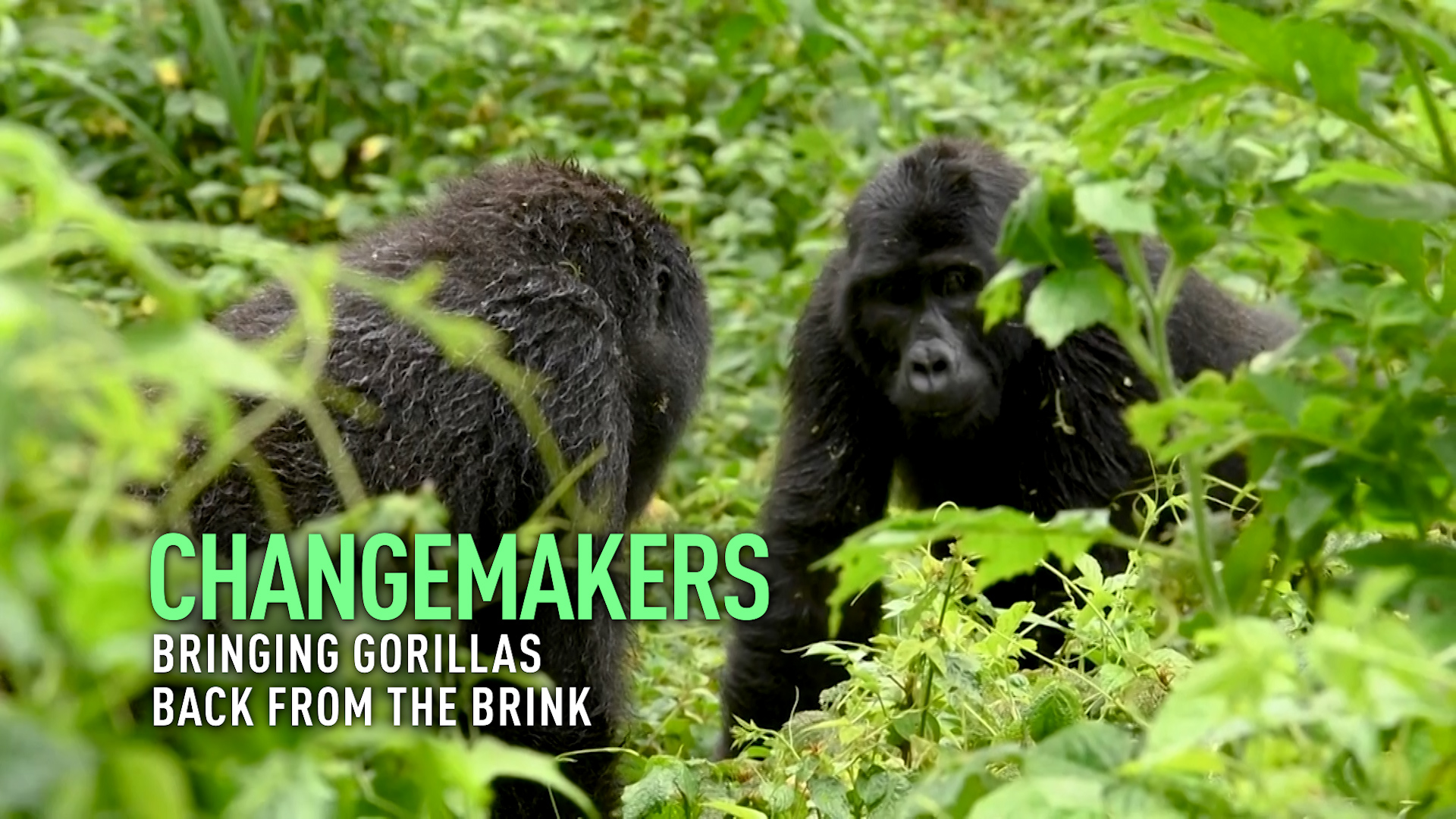
In the early 1990s, London's Royal Veterinary College (RVC) welcomed a young student from Uganda. Little did they know that she would become one of their most influential alumni – transforming the way wildlife conservation is implemented in Africa.
Gladys Kalema-Zikusoka is now famous for protecting endangered mountain gorillas and other wild animals, but lesser-known is her groundbreaking work promoting human health and prosperity. She's a passionate advocate for this revolutionary holistic approach to conservation.
Kalema-Zikusoka returned to the RVC to promote her new book Walking with Gorillas – and to pass on her knowledge and experience to the latest cohort of enthusiastic young veterinary students.
A unicorn
Kalema-Zikusoka grew up loving animals and was fascinated by them, especially her neighbor's pet – a vervet monkey who regularly came to visit her. At 18, she had an opportunity to set up a wildlife club in her high school.
"When we took the children to the national parks, it was very exciting for me," she tells CGTN. "But when we got there, there was very little wildlife because it had been poached during the Idi Amin era.
"You could even have walking safaris. There were no predators anymore, no lions, leopards, so they said it's safe to walk. And so few elephants – many of them had gone to the neighboring Democratic Republic of Congo – I was really worried."
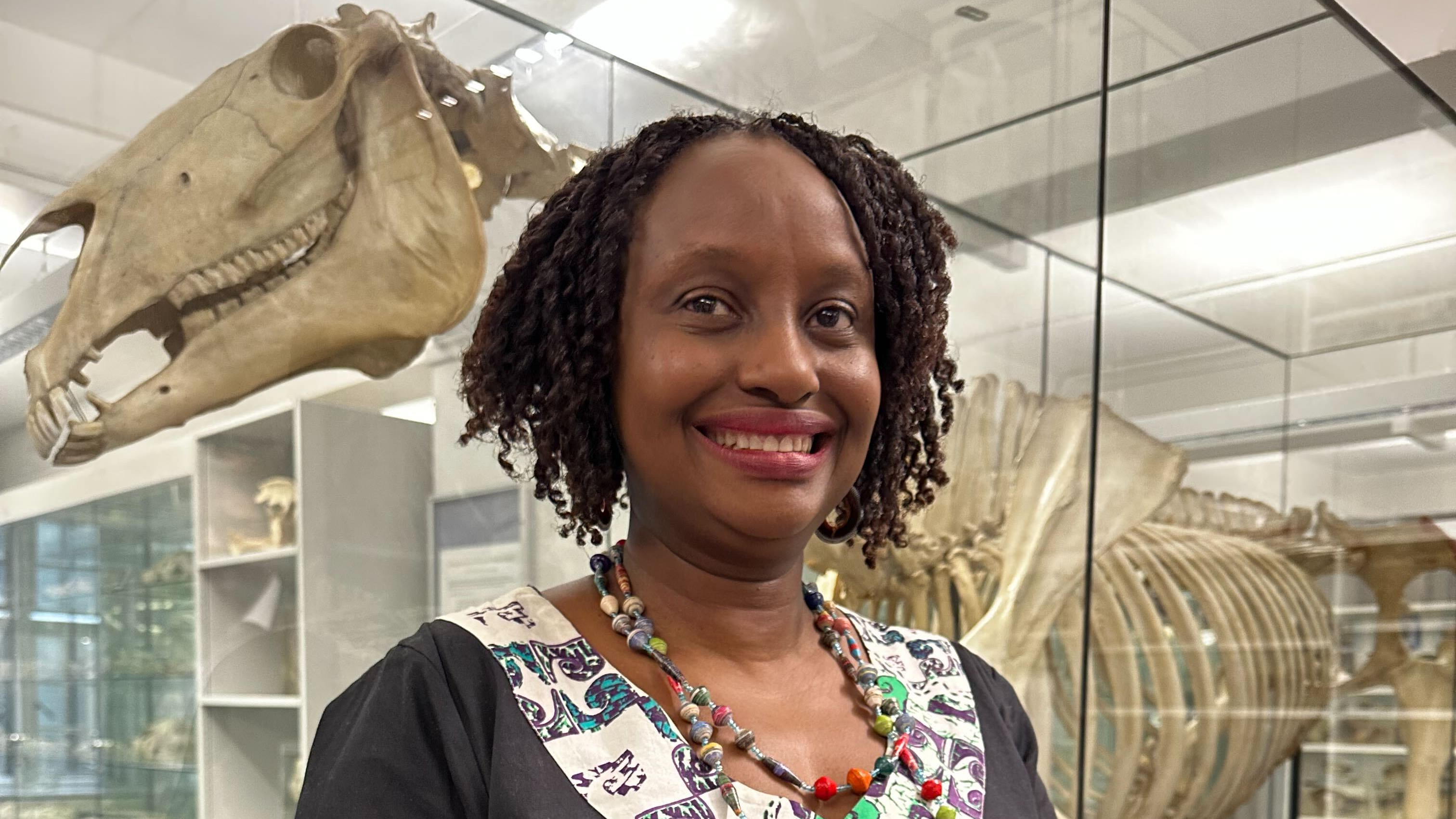
Gladys Kalema-Zikusoka speaks at the Royal Veterinary College London 2023. /Mearns
Gladys Kalema-Zikusoka speaks at the Royal Veterinary College London 2023. /Mearns
She had already decided to work with animals but now wondered, "Maybe as a vet I could help to bring the wildlife back."
Determined to achieve her dream, she applied to the RVC, one of the world's best veterinary schools. When she arrived, she was one of only three students of color on the course. There was little opportunity to work with wildlife but this did not deter her.
"It was only about domestic animals, but they did allow me to work with animals of my own choice," she recalls. "So I went back home and worked with captive chimpanzees who were victims of the bushmeat trade."
READ MORE
Why have half a billion birds died?
Austria using AI to protect biodiversity
Kakhovka dam: What will the environmental impact be?
From there, she had the exciting opportunity to work with mountain gorillas.
"When I worked with the mountain gorillas, I felt that I wanted to be a full-time wildlife vet, because seeing how few gorillas were remaining and looking at the threats all around, I could see a hard edge. People are surrounding gorillas and we could easily make them sick."
As a young woman working in the wild, she was herself a very rare sight.
"When I started out, there were no female rangers or very few women in conservation – and hardly any women leaders."
Back from the brink
Mountain gorillas are primarily found in two regions: the Virunga Mountains, which are located along the borders of Uganda, Rwanda, and the Democratic Republic of the Congo (DRC); and the Bwindi Impenetrable National Park in Uganda. These areas are the last remaining habitats for the critically endangered mountain gorillas.
Bwindi Impenetrable National Park is situated in southwestern Uganda. It is a UNESCO World Heritage site and is home to roughly half of the world's mountain gorilla population.
In 1997, as Uganda's first wildlife vet, Kalema-Zikusoka participated in the first gorilla census where they recorded just 650 gorillas left in the wild. Thankfully, it was a low.
"As we speak now, the number's almost doubled – and we believe that the numbers are continuing to grow," she says.
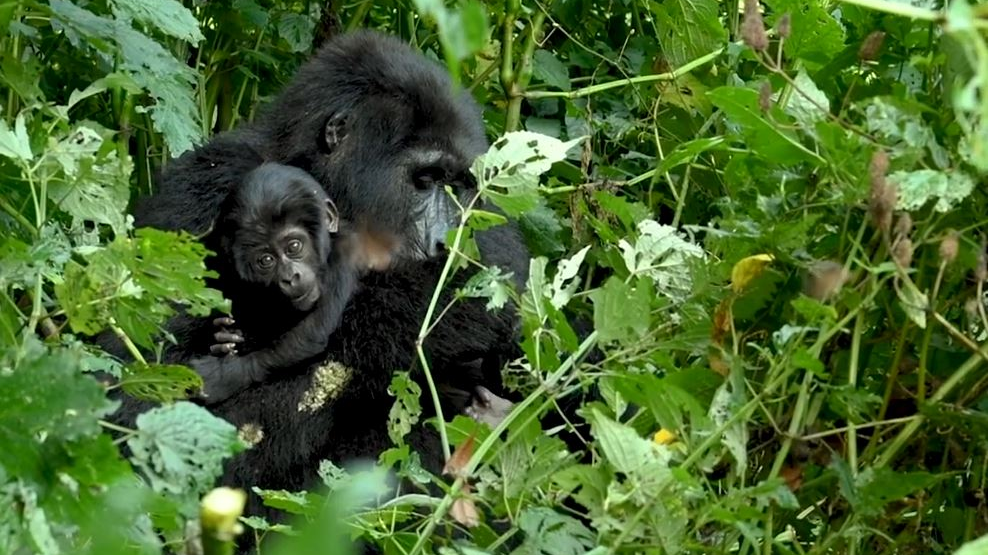
A mother and child in Bwindi Impenetrable National Park. /Nick Penny
A mother and child in Bwindi Impenetrable National Park. /Nick Penny
That growth was achieved through a combination of factors, starting with her veterinary interventions: "A lot of it is improved veterinary care because more gorillas are surviving that fall sick."
However, interaction with humans had its drawbacks: It became apparent that gorillas were picking up anthroponotic, or human-based, diseases. To solve this situation, the local population needed to buy into conservation too.
Kalema-Zikusoka started an NGO called Conservation Through Public Health, and it made education the second significant factor in gorilla population growth.
"We support community-based healthcare, and we teach those people to do conservation education as well," she explains. "They talk to people about not eating bushmeat because it can make them sick, but also not to poach and collect firewood."
The public also learned "how they can prevent themselves making gorillas sick – by covering their rubbish heaps and not putting dirty clothing on scarecrows, which is how the gorillas picked up scabies – when they entered people's gardens for the banana plants and got scabies."
Improving community health boosted a holistic improvement, by making the locals feel that authorities cared about them – not just the forest and the wildlife.
"We found you couldn't keep the gorillas healthy without improving the health of the communities," she says. "And so we based on preventing zoonotic disease, because you also found that people were eating bushmeat and some of them were picking up anthrax from the hippos. In Queen Elizabeth National Park, disease was going in both directions."
Eco-tourism
An important thing that the gorillas have brought to the local area is eco-tourism. People from around the world travel to Uganda to see the mountain gorillas. Permits cost hundreds of dollars and the profits from this tourism are felt by all.
"Tourism has helped the mountain gorilla population to grow, because people have an economic incentive to protect the gorillas and coexist with them," says Kalema-Zikusoka.
"If a gorilla goes to their garden, they won't kill the gorilla because they know tourists are coming to see these gorillas and their children are able to go to school. 'My children have jobs' – that's the biggest one."

When the national parks were created, the Uganda Wildlife Authority hired most people from the community to be park staff. These employees carry tourist luggage to the gorillas, sell crafts and work with tours companies or tourist accommodations. People who may have gone to the forests to poach firewood or bush meat are now earning more by looking after the animals.
"We call them 'born-again poachers,' because they're earning more protecting rather than killing the animals."
Money from tourism also pays for law enforcement, so that there are more patrols to pick up snares which gorillas can get caught in. Alongside this, revenue from tourism is shared officially with the community – 20 percent of the park entry fee goes to the local communities and $10 from every permit. Prior to COVID-19, 40,000 visitors per year were entering Bwindi national park.
"The money from gorilla tourism has made people outside the conservation community start to care about conservation, because it's still a developing country," Kalema-Zikusoka explains.
"There has to be people saying 'How can we lead people out of poverty?' Tourism now contributes almost 8 percent of GDP – and 60 percent of that now comes from gorilla tourism."
Protection paralysis in the pandemic
The importance of eco-tourism became obvious in 2020 when the COVID-19 pandemic reached Uganda. Most of the tourists to Uganda come from the U.S., UK, Europe and Australia – and suddenly there were no tourists. This was to protect people from the spread of the virus, but also to protect the gorillas from catching COVID-19.
"You could get as close as seven meters from them," Kalema-Zikusoka says, "which is enough of a distance to cough or sneeze and pass on the pandemic. And so when the pandemic began, suddenly there were no tourists."
With no money in tourism, people returned to the forest to gather firewood and bushmeat – and two months later, a gorilla was killed by a hungry bushmeat poacher. Ugandans don't eat gorillas, but with the tourists gone, poachers returned to set snares to kill smaller animals – and when one poacher speared a bush pig, it screamed and the gorilla charged to protect his family. The poacher then killed the gorilla, who was called Rafiki.
"He was called Rafiki because he's friendly, his family was broken up when he was speared," says Kalema-Zikusoka. "That made everybody realize there's a lot of poaching because already the snaring had gone up. That was a very scary time for everyone."
The poacher was jailed for 11 years – the longest anyone has ever been sentenced for killing wildlife in Uganda – and the case was a wake up call for Kalema-Zikusoka.
"I realized that as long as there are more poor people like him in the forest, there's no way that they are going to manage and they're still going to find themselves going back."
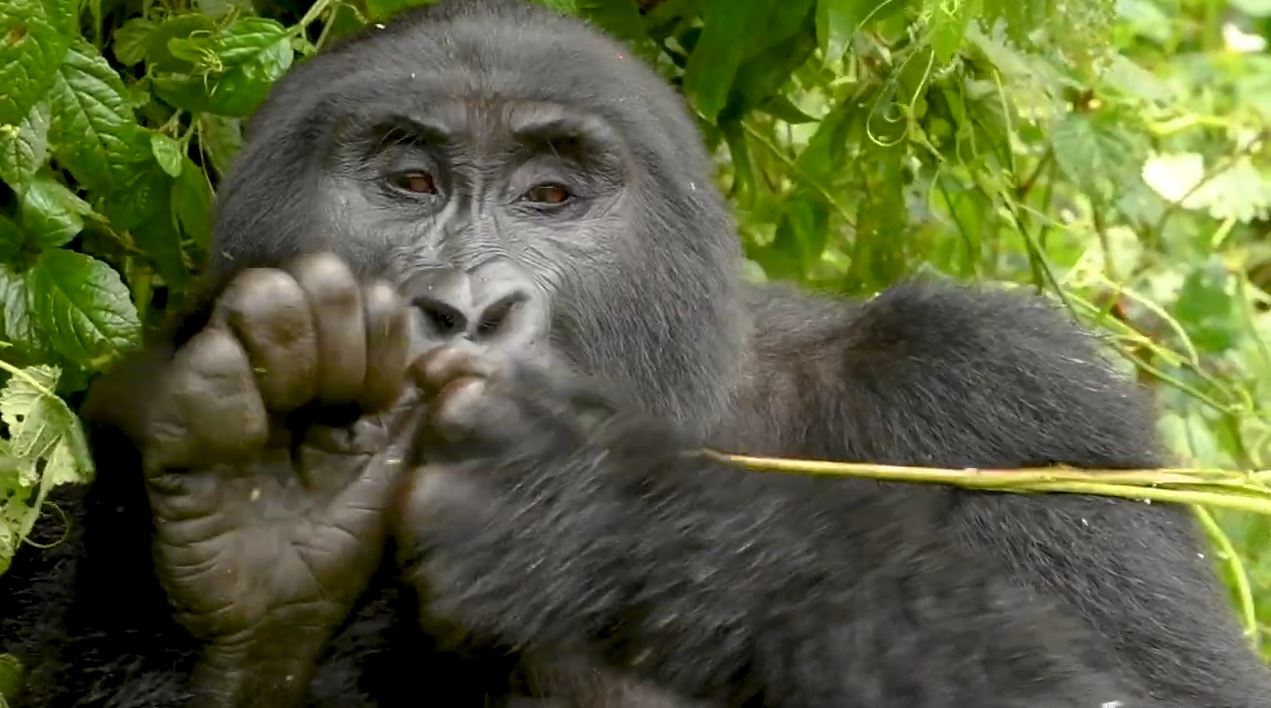
A gorilla up close in Bwindi Impenetrable National Park. /Nick Penny
A gorilla up close in Bwindi Impenetrable National Park. /Nick Penny
In response, the NGO started a food security program for 1,500 vulnerable households, providing fast-growing seedlings which could go from sowing to table in four months. One of the recipients was the poacher's wife – only 22 at the time with three children under the age of three.
"The main reason they're poaching is because they're hungry," says Kalema-Zikusoka. "You’d find that somebody is a poacher, but as soon as his son is earning a living carrying tourist luggage to the gorillas as a porter, he won't enter the forest to poach.
"But now his son is not bringing money home, he goes back to hunt because he doesn't have any other choice."
However, the pandemic had a surprising upside for Kalema-Zikusoka's work.
"COVID has really raised awareness," she reflects. "Before COVID, I put the words 'zoonotic disease' in a grant application. People said, 'No one understands that. You have to explain this is between people and animals.'"
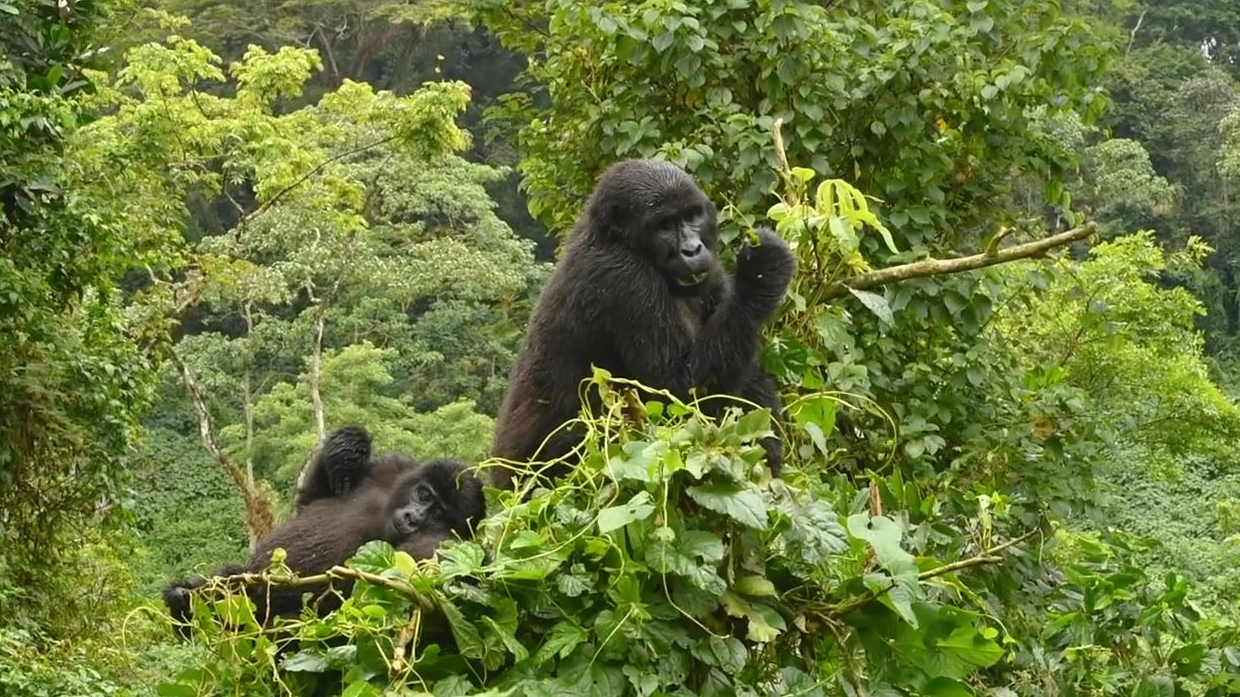
Gorillas play in Bwindi Impenetrable National Park. /Nick Penny
Gorillas play in Bwindi Impenetrable National Park. /Nick Penny
Post-pandemic, everyone understands that these diseases can be a big issue for people, public health, conservation, sustainable development and tourism – and can bring economies to standstill.
"We've had people saying during the pandemic, 'Now we know what you've been talking about all along.' Everyone knows that you can't just treat people alone and forget about the animals or treat animals and forget about the people.
"You have to treat people, animals and the environment together. You have to address the health needs together if you're going to have long-term impacts and holistic solutions."
Raising the alarm
This new understanding is helping more resources to go to Africa. And when COVID-19 hit, protection of the gorillas was quickly implemented.
"We led the effort to make sure that rangers and conservation personnel are part of the priority workers to get vaccinated against COVID," Kalema-Zikusoka recalls. "Once the vaccines reached Uganda, that also helped to protect the gorillas because of all the measures we put in place – making sure everyone wears masks, distance is more greatly enforced with the gorillas, people are tested and vaccinated in time.
"Luckily, the gorillas did not pick up COVID, as far as we know."
Kalema-Zikusoka is now involved in setting up an early-warning system for disease outbreaks.
"I'm really excited to be on the World Health Organization Scientific Advisory Committee for Origin of Novel Pathogens," she says. "I'm among 27 people from around the world who are looking at these issues, and we're trying to develop a framework to prevent future pandemics and advising on studies to look for the source of SARS-CoV-2, which causes COVID."

Collecting samples in Bwindi Impenetrable National Park. /Nick Penny
Collecting samples in Bwindi Impenetrable National Park. /Nick Penny
The pandemic was a warning to Kalema-Zikusoka, who realized countries can't only depend on eco-tourism to survive. Luckily, she had already established a social enterprise in 2016 called Gorilla Conservation Coffee.
"My husband and I helped initiate that," she explains. "We decided to build a global coffee brand to save the gorillas, because as you're visiting the gorillas, you were crossing coffee farms and these farmers weren't getting a steady market or a fair price.
"So with Gorilla Conservation Coffee, we're able to give them a good price for good coffee and a donation from every bag goes to support the work in the community."
Before the pandemic, customers were mostly gorilla trekkers, tourists or lodges serving the coffee. But in the pandemic the business was able to expand to place orders in the UK.
"Just before the gorilla was killed, we placed the first order and we always told people that even if you can't visit, you can still support the gorillas by buying coffee because then we can pay money to the farmers. And those people were keeping out of the forest at such a critical time."
A new mountain to climb
Highly specialized and adapted to the mountainous forests in which they reside, mountain gorillas are confined to specific regions. The total area where both populations of mountain gorillas live is just over 700 square kilometers, so Kalema-Zikusoka's success in growing the population has given rise to a new problem for her team.
"There's not much space for them to expand," she says. "And actually, that's the only reason I'm a bit concerned about their future, because as long as people are so close to them at the edge, they're likely to pick up diseases from people and they're likely to cause damage to people's crops.
"That human-wildlife conflict is not going to enable the gorillas to have a very secure future, so we're working with communities to see if people are willing to sell land to expand the gorilla habitat and then we know that their future is secure."
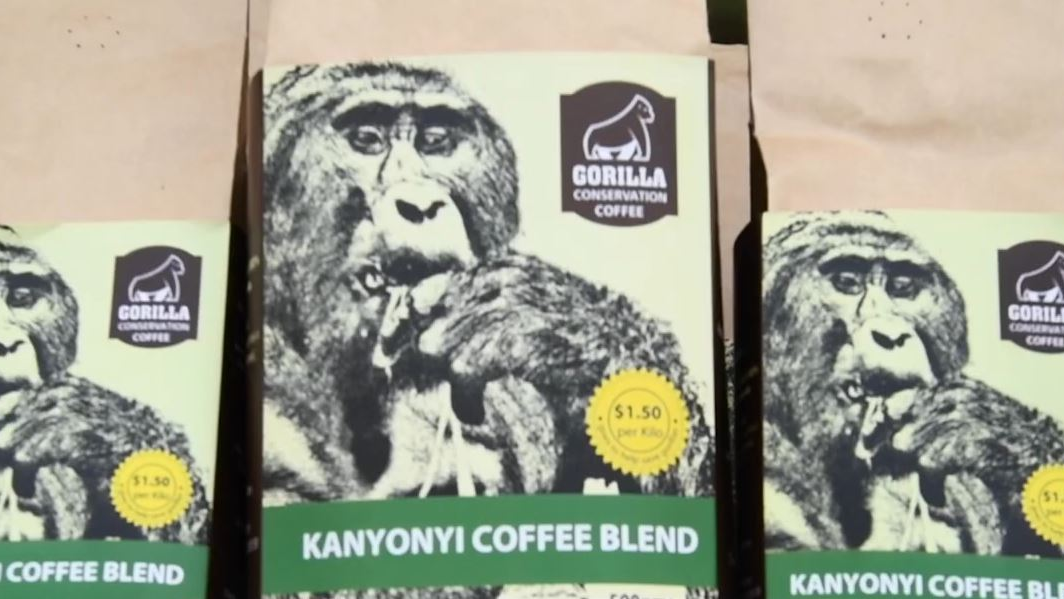
Coffee sales help pay for conservation efforts. /Nick Perry
Coffee sales help pay for conservation efforts. /Nick Perry
As a wildlife vet and a Ugandan woman, Kalema-Zikusoka has been a pioneer in the field of science, conservation and society but she understands that her achievements have been realized through a concerted effort between the government, NGOs, tour operators and the people of Uganda.
"I believe that as long as we continue working together, the gorilla numbers will keep growing," she says. "Unfortunately in other countries in Africa which have gorillas – the eastern lowland gorilla, the western lowland gorilla, and the cross-river gorilla – the numbers are going down.
"Similar kinds of initiatives need to be taken to those areas – sustainable community livelihood and alternative livelihood projects need to be taken to these other communities."
Subscribe to Storyboard: A weekly newsletter bringing you the best of CGTN every Friday